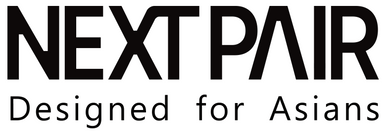
Single Vision vs. Progressive Lenses: Understanding the Difference and Choosing What You Need
Introduction: What Are Single Vision and Progressive Lenses?
When selecting the right lenses for your eyewear, understanding the difference between single vision and progressive lenses is essential. These two types of lenses are designed to address different vision needs, and choosing the right one depends on your lifestyle, prescription, and how you use your glasses.
This article will explore the features, benefits, and differences between single vision and progressive lenses, helping you decide which is the best fit for your eyes.

What Are Single Vision Lenses?
Single vision lenses are the most common type of lenses used in eyewear. As the name suggests, they have a single prescription throughout the entire lens, designed to correct one specific type of vision problem, such as nearsightedness, farsightedness, or astigmatism. These lenses provide clear vision at one distance, either close-up, intermediate, or far away, depending on your prescription.
Key Characteristics of Single Vision Lenses:
-
Single Focus: They correct one type of refractive error, such as myopia (nearsightedness) or hyperopia (farsightedness).
-
No Distortion: Because the lens has the same prescription throughout, there’s no need to adjust your focus when looking at different distances.
-
Affordable and Simple: Single vision lenses are typically more affordable than progressive lenses because they are easier to manufacture and design.
-
Ideal for Younger People or Those with One Vision Issue: If you only have a single vision problem, like needing glasses for reading or distance, single vision lenses are often the right choice.

When to Choose Single Vision Lenses:
-
If you have nearsightedness or farsightedness and only need correction for one distance.
-
If you spend a lot of time looking at things that are either far away or up close, but not both simultaneously.
-
If you are younger and don’t yet need multi-focal correction.
What Are Progressive Lenses?
Progressive lenses are also known as multifocal lenses, as they provide a gradual transition between different vision prescriptions. Unlike single vision lenses, progressive lenses are designed to correct multiple vision problems by offering clear vision at all distances: near, intermediate, and far. These lenses have no visible lines, giving them a seamless appearance, and they allow for a natural transition between focusing on objects at different distances.
Key Characteristics of Progressive Lenses:
-
Multiple Focus Zones: Progressive lenses provide three areas of focus: near (for reading), intermediate (for computer work), and distance (for driving or seeing across a room).
-
No Visible Lines: Unlike bifocals, progressive lenses have no lines separating the different vision areas, providing a smooth transition between them.
-
Adaptation Period: Some people may experience a brief adaptation period as they get used to the different focus areas in progressive lenses.
-
Convenient and Aesthetic: These lenses eliminate the need for multiple pairs of glasses for different activities, offering both practicality and style.
When to Choose Progressive Lenses:
-
If you are experiencing presbyopia, a condition that typically begins around age 40, where the eye’s ability to focus on near objects diminishes.
-
If you need correction for multiple distances, such as reading, working on a computer, and driving.
-
If you want a seamless, line-free design, as progressive lenses don’t have the visible lines that bifocals do.
Key Differences Between Single Vision and Progressive Lenses
While both single vision and progressive lenses help improve vision, they cater to different needs. Here’s a breakdown of the key differences between them:
| Feature | Single Vision Lenses | Progressive Lenses |
|---|---|---|
| Prescription Type | One prescription for one type of vision | Multiple prescriptions for near, intermediate, and distance vision |
| Focus Areas | One focus (either near or far) | Three focus areas (near, intermediate, and distance) |
| Appearance | Simple, single prescription lens | No visible lines; seamless transition between focus areas |
| Best for | People with one vision problem | People with presbyopia or those who need correction at multiple distances |
| Adaptation | Quick to adapt | May take time to adjust to the multiple focus zones |
| Cost | More affordable | More expensive due to complexity of design |

Which Do You Need?
Choosing between single vision and progressive lenses depends on your unique vision needs and lifestyle:
-
Single Vision Lenses:
-
Choose single vision lenses if you only need correction for one vision problem (e.g., nearsightedness or farsightedness).
-
If you are younger or don’t experience presbyopia, single vision lenses will provide you with the clarity you need for either distance or close-up vision.
-
Single vision lenses are also more affordable and simpler to use, making them ideal for individuals who don’t require multi-focal correction.
-
-
Progressive Lenses:
-
Progressive lenses are ideal for people who need correction for multiple distances, such as both near and far vision.
-
If you are over 40 years old, you may begin experiencing presbyopia, which makes progressive lenses a good solution for maintaining clear vision at all distances without needing multiple pairs of glasses.
-
Progressive lenses are aesthetic, with no lines, and they can be more convenient than constantly switching between reading glasses and distance glasses.
-

Conclusion: Choosing the Right Lenses for You
Both single vision and progressive lenses offer distinct advantages depending on your vision needs. If you only need correction for one type of vision issue, single vision lenses are a simple, cost-effective solution. However, if you require correction for multiple distances, such as in the case of presbyopia, progressive lenses can provide the all-in-one solution you need for both near and far vision without the need for multiple pairs of glasses.
Consult with your optometrist or ophthalmologist to discuss your vision requirements and lifestyle to determine which type of lens is best suited for you.
 titanium eyewear
titanium eyewear





